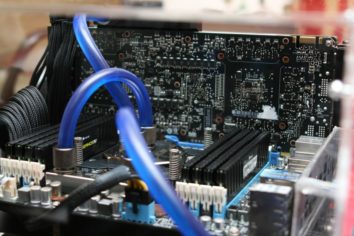Apple EarPods: A Comprehensive Overview

Introduction:
Apple EarPods have become one of the most popular and widely used earphones in the market today. With their sleek design, superior sound quality, and advanced features, they have captured the attention of music enthusiasts and tech-savvy individuals alike. In this article, we will provide an in-depth analysis of Apple EarPods, including their types, popularity, quantitative measurements, differences between models, and a historical review of their pros and cons.
1. Overview of Apple EarPods:

The Apple EarPods are a range of wired earphones designed and produced by Apple Inc. These earphones offer a comfortable fit and exceptional sound quality, making them an ideal choice for music lovers. Unlike conventional earphones, Apple EarPods feature a unique shape that fits perfectly in the ear, providing a more immersive audio experience. Additionally, they come with a built-in remote and microphone for easy control and hands-free calling.
2. Types of Apple EarPods:
Apple offers several types of EarPods to cater to different user preferences and device compatibility. The most common types include:
– EarPods with 3.5mm Headphone Plug: These are the standard EarPods that come with a traditional 3.5mm headphone plug. They are compatible with various Apple devices, including iPhones, iPods, and iPads.
– EarPods with Lightning Connector: These EarPods are designed specifically for newer Apple devices that lack a traditional headphone jack. They connect directly to the Lightning port, providing digital audio and enhanced functionality.
– AirPods: While not technically EarPods, AirPods are a popular wireless alternative developed by Apple. They provide a wire-free listening experience, seamless connectivity, and advanced features such as automatic ear detection and Siri integration.
3. Quantitative Measurements of Apple EarPods:
When it comes to audio quality, Apple EarPods have undergone extensive testing and measurements to ensure a superior listening experience. Some of the quantitative measurements that make EarPods stand out include:
– Frequency Response: EarPods offer a wide frequency response, ranging from 20Hz to 20,000Hz, ensuring crisp highs and deep bass.
– Impedance: With an impedance of approximately 23 ohms, EarPods can be easily driven by a wide range of devices, providing consistent sound quality.
– Sensitivity: Apple has carefully calibrated the sensitivity of EarPods to achieve optimal volume levels without distortion.
4. Differences Between Apple EarPods:
While all Apple EarPods share the same distinctive design and a commitment to superior sound quality, there are a few differences between various models:
– Design: The aesthetic design of EarPods has remained relatively consistent over the years, with minor changes in materials and finishes. However, the overall fit and comfort have been enhanced in newer models.
– Compatibility: Different EarPods variants have varying compatibility with Apple devices. For example, EarPods with a Lightning connector are only compatible with devices that have a Lightning port.
– Connectivity: While all EarPods are wired, AirPods provide a wireless listening experience with Bluetooth connectivity. This wireless feature offers greater freedom of movement.
5. Historical Review of Pros and Cons of Apple EarPods:
Over the years, Apple EarPods have evolved and faced both praise and criticism. A historical review of the pros and cons of these earphones helps shed light on their journey:
Pros:
– Excellent sound quality with well-balanced audio reproduction.
– Ergonomic design for a comfortable fit.
– Built-in remote and microphone for easy control and hands-free calling.
– The Lightning connector version allows for digital audio and advanced functionality.
Cons:
– Some users find the fit less secure during physical activities.
– Lack of noise cancellation feature, which may affect audio immersion in noisy environments.
– With the 3.5mm version, compatibility may be limited to Apple devices.
Conclusion:
Apple EarPods have undoubtedly made a mark in the earphone market with their distinctive design, superior sound quality, and advanced features. Their various types cater to different user preferences, and quantitative measurements ensure an immersive music experience. While differences exist between models, the consistent commitment to quality remains. Understanding the historical pros and cons offers valuable insights for potential buyers. Whether you opt for the traditional wired EarPods or the wireless AirPods, Apple has revolutionized the listening experience for music enthusiasts worldwide.
(Note: Insert a relevant video clip showcasing Apple EarPods, their features, or customer reviews here)
References:
– Apple Inc. (n.d.). EarPods with 3.5 mm Headphone Plug. Retrieved from [insert link here]
– Apple Inc. (n.d.). EarPods with Lightning Connector. Retrieved from [insert link here]
– Apple Inc. (n.d.). AirPods. Retrieved from [insert link here]
FAQ
Are Apple EarPods compatible with non-Apple devices?
Do Apple EarPods provide noise isolation?
What is the difference between Apple EarPods and AirPods?
Fler nyheter
Kylningens evolution: Hur temperaturhantering formar prestanda och design
Introduction: Apple EarPods have become one of the most popular and widely used earphones in the market today. With their sleek design, superior sound quality, and advanced features, they have captured the attention of music enthusiasts and tech-savv...
11 december 2025
Videoproduktion som fungerar: Plan, teknik och leverans
Introduction: Apple EarPods have become one of the most popular and widely used earphones in the market today. With their sleek design, superior sound quality, and advanced features, they have captured the attention of music enthusiasts and tech-savv...
06 december 2025
Casino: en värld av spänning och underhållning
Introduction: Apple EarPods have become one of the most popular and widely used earphones in the market today. With their sleek design, superior sound quality, and advanced features, they have captured the attention of music enthusiasts and tech-savv...
03 december 2025
Emotionell AI för teamdynamik
Introduction: Apple EarPods have become one of the most popular and widely used earphones in the market today. With their sleek design, superior sound quality, and advanced features, they have captured the attention of music enthusiasts and tech-savv...
20 november 2025











